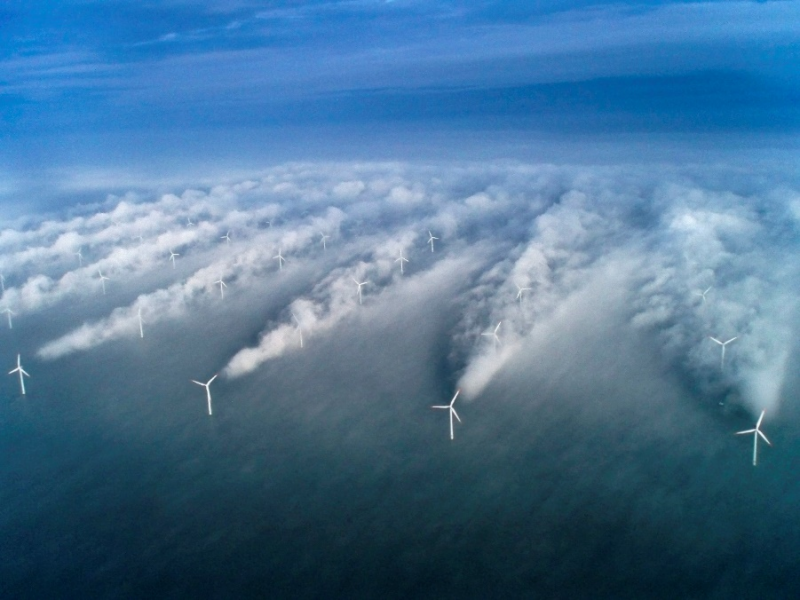
Wind turbines placed within a wind farm are prevented from being too close because of the so-called wake shielding problem, which occurs when less energetic wakes coming off upstream turbine impinges on the downstream turbines. Measurements at the Horns Rev Wind Farms show substantial energy loss (40% loss) due to wake shielding. The reduction of wake shielding offers enormous potential to improve overall wind farm performance.
The present research studies ways to reduce the wake shielding effect by near-wake modification and novel turbine design to achieve ascending wake structures. The key idea is to create streamwise vorticity components that cause the wake to rise. A tilted rotor configuration will cause the skewed helical near wake to have strong streamwise vorticity components that lead the wake to roll-up into an ascending vortex pair structure, potentially alleviating the shielding problem. Similar wake behavior occurs behind aircraft and rotorcraft, even at very low advance ratio, where upward lift produces a rolled-up descending vortex wake.

Steering the wakes upward is preferable to sideways or downwards, since the ascending wakes can create an aerodynamic pumping effect that directs energetic wind from higher altitude into the downstream turbines to replace the ascending energy depleted wakes. Carried out on a wind farm scale, the aggregate effect could be pumping of more energetic fluid downward into the turbine array, while expelling less energetic fluid upward. To achieve this goal, which requires a very substantial degree of upward wake transport, significant turbine redesign will be needed.
Selected References:
Su, K, and Bliss, D., 2016. "Wind farm performance improvement by using wake transport." Proceedings of AHS Forum 72.